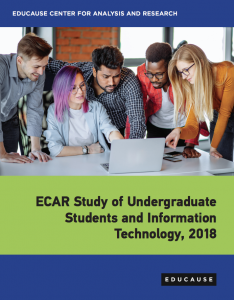This is the first in a series of blogs tailored to faculty and staff who create electronic learning resources for students. In this article, the concept of Student Success Sites is introduced, followed by a list of strategies to consider during the planning and development phase. Subsequent blogs on this topic will give more details on these strategies.
The “What” of Student Success Sites
Student Success Sites are digital learning resources available to students before, during or towards the end of their educational program that contribute to student success. These electronic Student Success Sites can be resources for any students including those in fully online, blended or on-campus programs. These sites may take the form of one learning module (i.e., a chunk of learning on a certain topic) or consist of several modules within a site.
These are several categories of Student Success Sites currently used at the University of St. Thomas:
- Onboarding sites to provide orientation at the beginning of a program or transition “all aboard” to a new experience such as orientation to your first online class;
- Program community sites to provide connection to the people and information in a program once you have had an initial orientation; and
- Knowledge, skills or competencies sites to teach a certain concept or subject area that is either program specific or something that cuts across various program areas.
Increasing the Likelihood of Success in Using Success Sites
We want these electronic resources to support student success. Yet, simply calling something a “success tool” or a “student success site” does not automatically lead to success. How can we use data and research, along with hunches and context, to move towards increased student success?
For one thing, as you articulate your Student Success Site goals, also start to envision how you might measure your success at reaching those goals. This up-front planning about how to assess effectiveness of new sites you create will help you to over time make data-based improvements on these resources.
The March 2019 blog post about Strategy One (Articulate the goals for the site and ways to assess its effectiveness at meeting those goals) will further describe this approach.
 Another way to use data to inspire your work: Read the Educause ECAR Study of Undergraduate Students and Information Technology, 2018 Report (Galanek, Gierdowski, & Brooks, 2018).
Another way to use data to inspire your work: Read the Educause ECAR Study of Undergraduate Students and Information Technology, 2018 Report (Galanek, Gierdowski, & Brooks, 2018).
This study of over 64,00 undergraduate students includes a section of research findings around online student success tools.
The ECAR report describes two types of Student Success Tools:
- Academic Success Tools that include early alert systems, information on how to improve performance in a course, electronic tutoring tools, and more; and
- The Work of Being a Student Tools that include things like self service appointment systems and degree planning tools such as tracking credits and courses registration.
The study findings describe how Student Success Tools can contribute to students’ academic success, and identify strategies to improve their use and effectiveness. As I read the phrase “Success Tool” in the report, I think of our Student Success Sites as a particular form of Student Success Tool.
The findings in the ECAR 2018 Study are extremely useful. I wanted to point you to this resource now since I will circle back to ideas from this study in future blog posts.
Devices and Platforms Used for Student Success Sites
Our Student Success Sites can be accessed electronically from a laptop, desktop, iPad, or mobile device. Some of the content and activities in these sites work best when using a laptop or desktop; however, we strive to create these sites with an assumption that some or much of the content may be accessed from a mobile device.


At the University of St. Thomas, a growing number of Student Success Sites exist within our Canvas learning management systems (LMS) for the following reasons:
- Canvas is the platform students use for their for-credit courses, so using Canvas for these sites builds upon the familiarity of a system that students already need to use;
- Canvas uses a module structure which allows presenting information and activities in a sequential way that scaffolds on previous content; and
- Because students use Canvas for coursework, there are options to leverage a “flipped” classroom model. For example, some orientation content is presented online prior to students coming to campus for in-person learning interactions, and/or online content is delivered following an on-campus session.
We also recognize that Student Success Sites might be hosted in other online platforms beyond your university’s primary (for-credit courses) LMS and envision over time that some of our St. Thomas Success Sites will also exist in other types of electronic environments or additional technologies that interface with our LMS.

Eight Strategies to Consider as You Develop Your Site
The following eight strategies grow out of reflecting upon various St. Thomas experiences using Canvas as a resource for student success. Consider how these strategies could assist you to plan and develop Student Success Sites.
- Articulate the goals and ways to assess the goals of the resource site.
- Create a clear home page and simple site navigation so students start and stay with it.
- Design resources that are accessible to all students, not just some students.
- Offer a variety of ways that students can engage in their learning.
- Embed welcome, equity and anti-bias messages into these resources.
- Plan an effective introduction of the resource to students so that they know how to find it and why to use it.
- Involve the faculty, staff, and student leaders connected to the student experience.
- Apply a framework of continuous learning that will help you reach your goals and grow systemic capacity.
Future Student Success Site blogs drill down into these strategies and offer examples of what they look like.
The March 2019 blog will unpack Strategy 1: Articulate the goals for the site and ways to assess its effectiveness at meeting those goals. This first strategy lays a foundational for your Student Success Site and will assist you in leveraging all the other strategies. Bookmark this blog site!
Citation:
Galanek, J.D., Gierdowski, D.C, & Brooks, D.C. ECAR Study of Undergraduate Students and Information Technology, 2018. Research report. Louisville, CO: ECAR, October 2018.
This post was written by Jo Montie, Online Learning Systems Facilitator with the St. Thomas E-Learning and Research (STELAR) Center at the University of St. Thomas in St. Paul, Minn. To learn more about the work of our team and to access additional resources, visit our website at www.stthomas.edu/stelar. If you have questions about this article or future topic suggestions, please email Jo at jkmontie@stthomas.edu.
